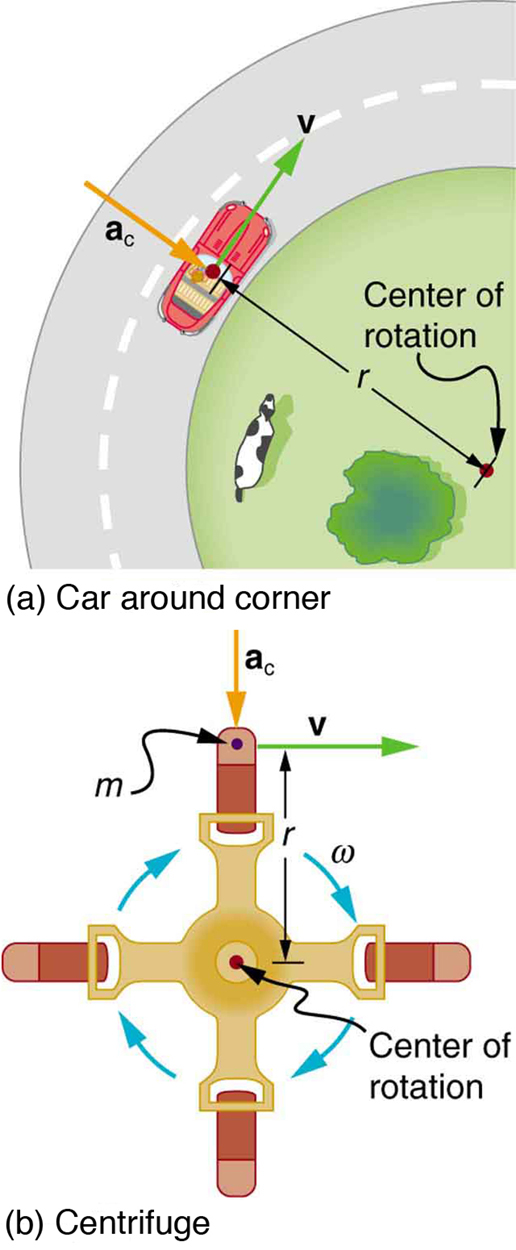| << Chapter < Page | Chapter >> Page > |
Recall that the direction of is toward the center. You may use whichever expression is more convenient, as illustrated in examples below.
A centrifuge (see [link] b) is a rotating device used to separate specimens of different densities. High centripetal acceleration significantly decreases the time it takes for separation to occur, and makes separation possible with small samples. Centrifuges are used in a variety of applications in science and medicine, including the separation of single cell suspensions such as bacteria, viruses, and blood cells from a liquid medium and the separation of macromolecules, such as DNA and protein, from a solution. Centrifuges are often rated in terms of their centripetal acceleration relative to acceleration due to gravity ; maximum centripetal acceleration of several hundred thousand is possible in a vacuum. Human centrifuges, extremely large centrifuges, have been used to test the tolerance of astronauts to the effects of accelerations larger than that of Earth’s gravity.
What is the magnitude of the centripetal acceleration of a car following a curve of radius 500 m at a speed of 25.0 m/s (about 90 km/h)? Compare the acceleration with that due to gravity for this fairly gentle curve taken at highway speed. See [link] (a).
Strategy
Because and are given, the first expression in is the most convenient to use.
Solution
Entering the given values of and into the first expression for gives
Discussion
To compare this with the acceleration due to gravity , we take the ratio of . Thus, and is noticeable especially if you were not wearing a seat belt.

Calculate the centripetal acceleration of a point 7.50 cm from the axis of an ultracentrifuge spinning at Determine the ratio of this acceleration to that due to gravity. See [link] (b).
Strategy
The term rev/min stands for revolutions per minute. By converting this to radians per second, we obtain the angular velocity . Because is given, we can use the second expression in the equation to calculate the centripetal acceleration.
Solution
To convert to radians per second, we use the facts that one revolution is and one minute is 60.0 s. Thus,
Now the centripetal acceleration is given by the second expression in as
Converting 7.50 cm to meters and substituting known values gives
Note that the unitless radians are discarded in order to get the correct units for centripetal acceleration. Taking the ratio of to yields
Discussion
This last result means that the centripetal acceleration is 472,000 times as strong as . It is no wonder that such high centrifuges are called ultracentrifuges. The extremely large accelerations involved greatly decrease the time needed to cause the sedimentation of blood cells or other materials.

Notification Switch
Would you like to follow the 'College physics arranged for cpslo phys141' conversation and receive update notifications?